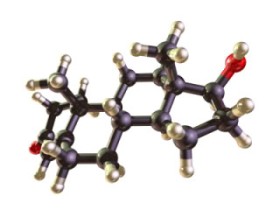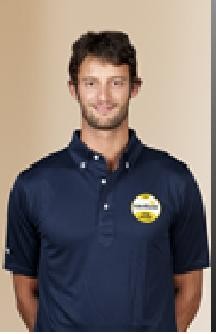
Testosterone
In summary I can say that:
–TESTOSTERONE has first rising peak at 2-3a.m. and one more but not so high around 6p.m.;
–CORTISOLO: is almost constant during the whole day with a rising peak in the early hours of morning and a low peak in the early sleeping hours;
–GH: is nightly hormone with rising peak at 12 am and low concentration between 8a.m. and 8p.m..
Interesting to know are the variations in blood concentration and production during the practice, especially during the power training:
–TESTOSTERONE: increases its level during the exercise and comes back to normal or lower level 45 minutes after the end of the practice;
–CORTISOLO: increases 40 minutes from the beginning of practice and keeps high until 30 minutes after the end of practice. It decreases to normal levels in 1 hour;
–GH: it has direct connection with the lactate production and indirect relationship with the rest timing.
If our goal is to manage hormones better with our training time we have also to consider “annual rhythms” of our hormones and mostly the “sleeping timing”.
–GH: has a season peak in May that become the best month to lose weight: lactate training (for example, rest-pause and stripping with low rest pause and high loads) with multi joint exercises and high protein diet.
–CORTISOLO: has a season peak in February/March. The timing coincides with the most important moment of the season. It’s crucial to best manage the intensity and timing of every training during these months (decrease the load of intensity by 20-30% as well as the duration of the practices). It’s useful to concentrate the portion of carbohydrates in the morning to better contrast its production.
–TESTOSTERONE: has a season peak in September/October which is the best moment to make basic exercises with high loads (and few reps) and long rest pause and follow higher fat and protein diet instead of carbohydrates.
Interesting now is the interaction of INSULINE (power anabolic hormone product from pancreas which contrasts the level of blood sugar) that has a season peak in October/November.
The 3 months S/O/N becomes the best period for power first and hypertrophy second.
Another very important variable to train the athletes more effectively (and to have an optimal condition for the morning training, power first, and technique as well) is the “sleeping time” that is often overlooked by both players and coaches.
During the night everybody passes through 90 minute cycles that are composed by 4 different stages of sleep (according with Electro Brain/muscle/eye analyze). After every cycles there is REM (rapid eye movement) deep sleep where there is the most production of GH stage that our body uses to recover energy. It would be nice to calculate these cycles and not to wake up during the REM period that is 20 minutes long, otherwise we will feel tired and nervous and not in an optimal shape for training.
For the same reason in the afternoon, between the 2 practices our athletes shouldn’t sleep more than 30’ otherwise they will enter in the “deep” phase and they are not going to feel ready for training.
It is important to mention diet after this discussion but I will leave it for the next article.
CONCLUSION:
After discussing all the important element I can conclude the final general suggestion (general because there are always other things to keep in mind):
-theoretically from 12 am to 2-3 am there is the best combination of high T and high GH and C. not so high. But of course that is the time we use for rest.
– the early morning and until 11:00 am is medium/high but C is high and GH (nightly hormone) is low.
Around 6pm we have a optimal relationship T/C e GH that start to raise up;
-the “explosive power” is max between 4pm and 6pm;
-body temperature is also higher in the evening and it also brings better propagate of nervous stimulation and high metabolism, facilitates energy production and improves aerobic capacity.
For all these reasons between 17:00-19:00 seems to be the best training time.
Added consideration: if we give a look to annual hormone cycles we note that in winter (volleyball season) both T and GH are definitively low according with C.
That’s why it seems to be even more important to think about the training and recovery, diet and supply, as well as physical trainer and head coach communication, to better modulate the physiological hormone production.

ALESSANDRO BRACCESCHI
ALESSANDRO BRACCESCHI (Fano, Italy 16/07/1980)
Degrees:
– Degree in accounting (I.T.C Battisti, Fano 1998)
– Degree in Physical Education (with emphasis on Prevention/Rehabilitation)University of Urbino, Italy 2003
Experience:
* 2006-2007 Player and Athletic Trainer “Nuncas Piu Volley Chieri”* 2006-2007 Athletic Trainer “Pallavolo Torino” Men’s Division C, Italy
*2007-2008 Athletic Trainer “Santeramo Sport” Women’s Division A1, Italy
*2007-2011 Athletic Trainer Bulgarian Women’s National and Junior National Teams
*2008-present Athletic Trainer “Vakifbank Gunes Sigorta” Women’s League 1, Turkey Champion’s League
Contact: bracceschi.alessandro@gmail.com Ita Tel N. 00393335848862 Tur Tel.N. 00905469496591